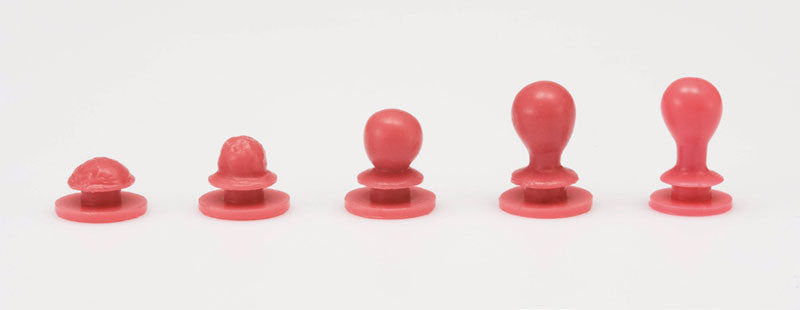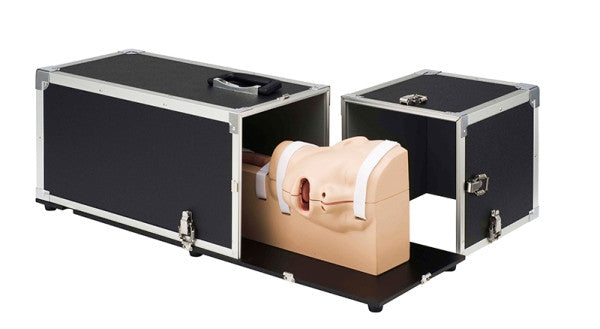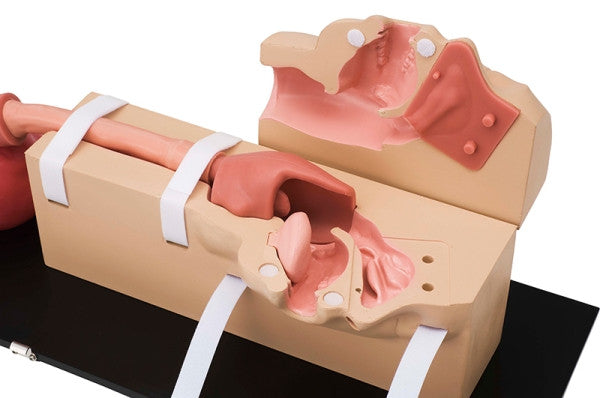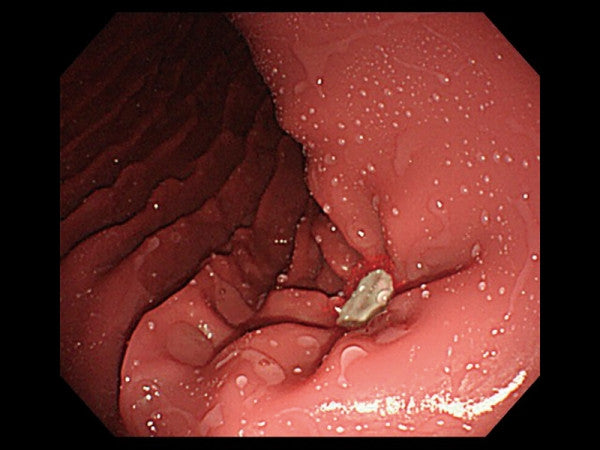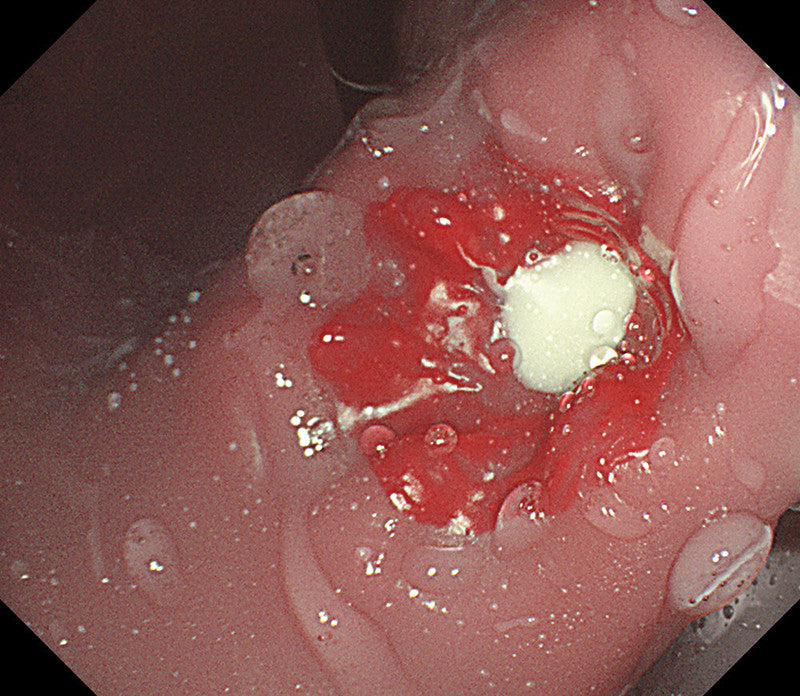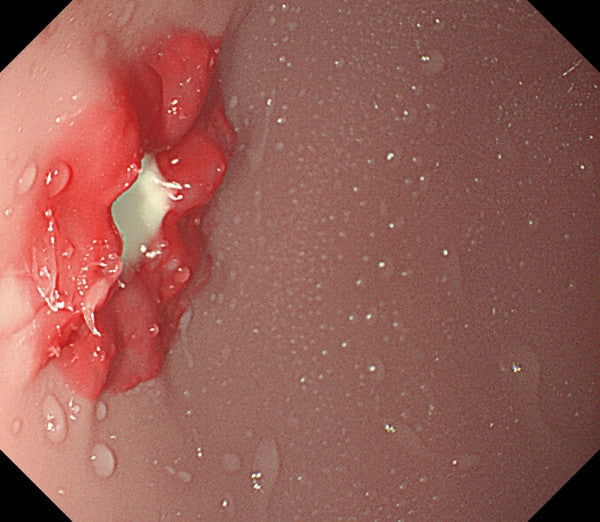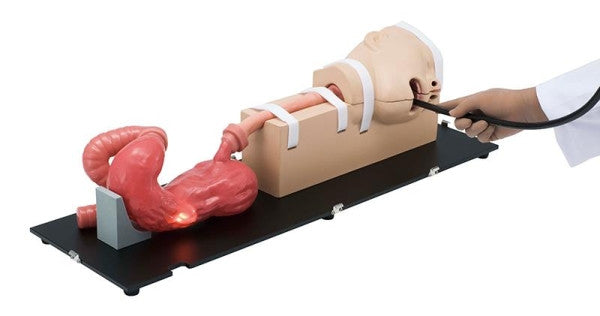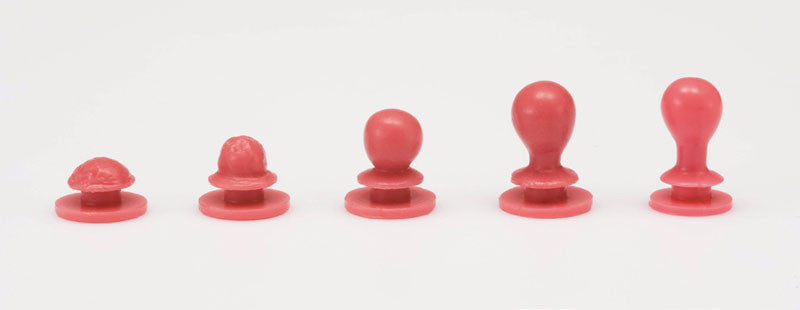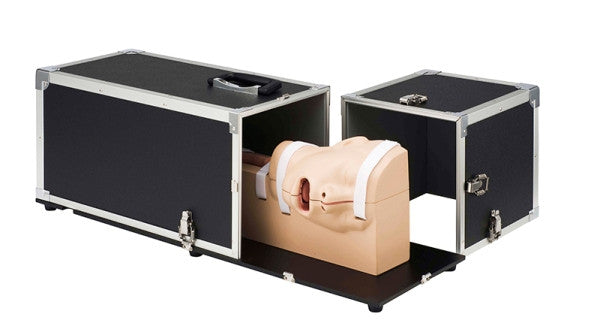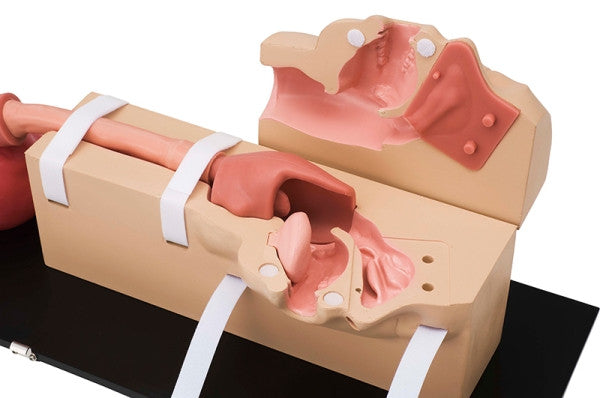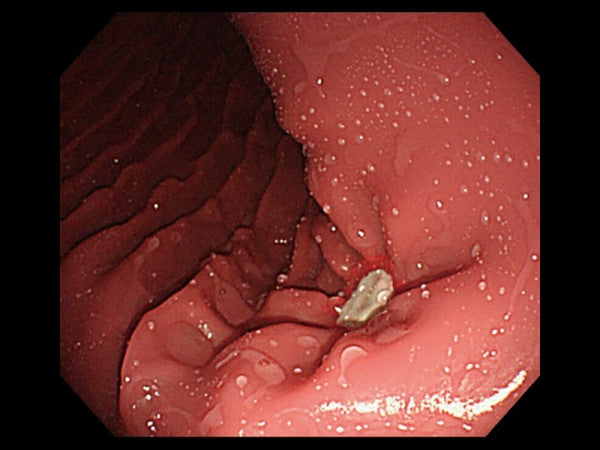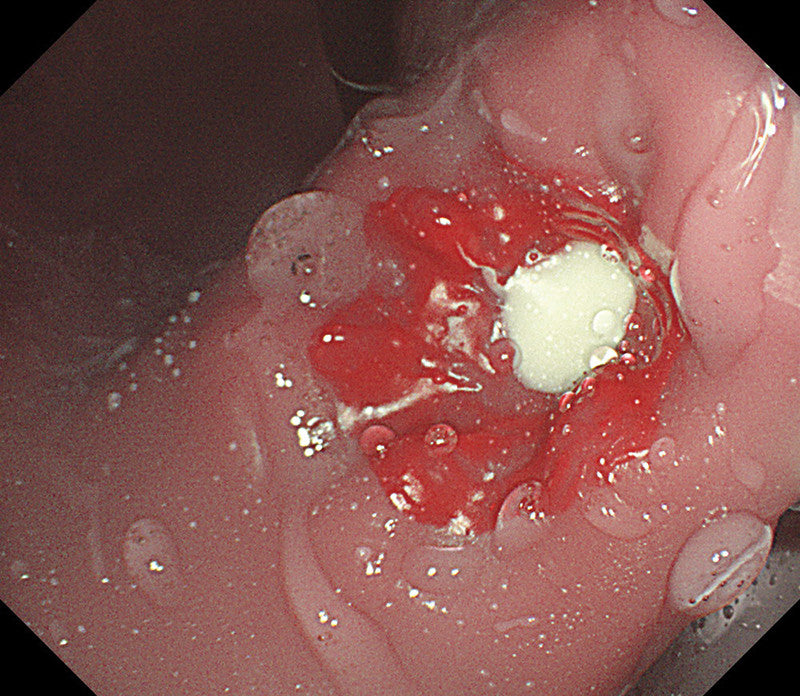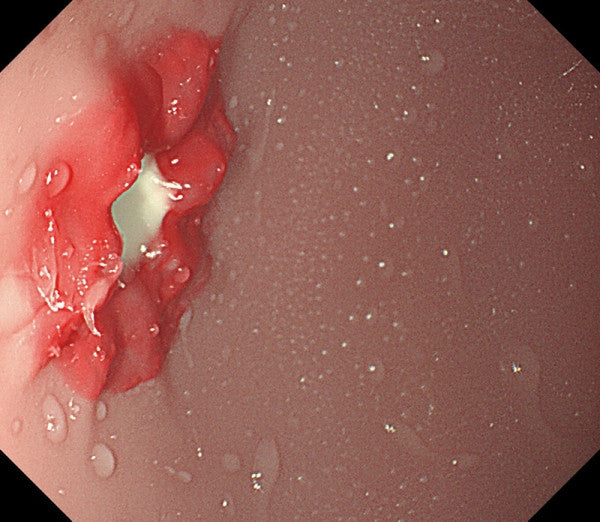Introducing the EsophagoGastroDuodenoscopy (EGD) Simulator, an innovative training resource that allows users to hone their skills in inserting an endoscope into the upper gastrointestinal tract and performing comprehensive examinations.
The endoscope can be inserted using both transoral and transnasal approaches. It also offers replicated ulcers and polyps for detailed observation.
Notable attributes of the simulator:
- Constructed with silicone rubber, the simulator provides the lifelike feel and appearance of the human body during endoscope insertion. The colour closely resembles the human body.
- Accommodates both transoral and transnasal insertion methods.
- Offers a specific mode for challenging transnasal insertion cases. This mode enables modifications in appearance and insertion techniques, such as nasal septum deviations to the right or left.
- Enables comprehensive training in endoscopic examination of the oesophagus, stomach, and duodenum. Additionally, facilitates training in the papilla cannulation method for endoscopic retrograde cholangiopancreatography (ERCP).
- Allows observation of gastric ulcers and early gastric cancer within the stomach. For observation purposes, there are attachment options for 4 types of polyps using Yamada classification.
- Reproduces the presence of an ulcer in the duodenum in realistic training scenarios.
- The facial region can be centrally opened to gain insight into the anatomical structure of the nasal and oral cavities, as well as the larynx.
Overall, the EsophagoGastroDuodenoscopy (EGD) Simulator is a realistic simulator well-suited to the education and training of medical students, as well as healthcare professionals.



